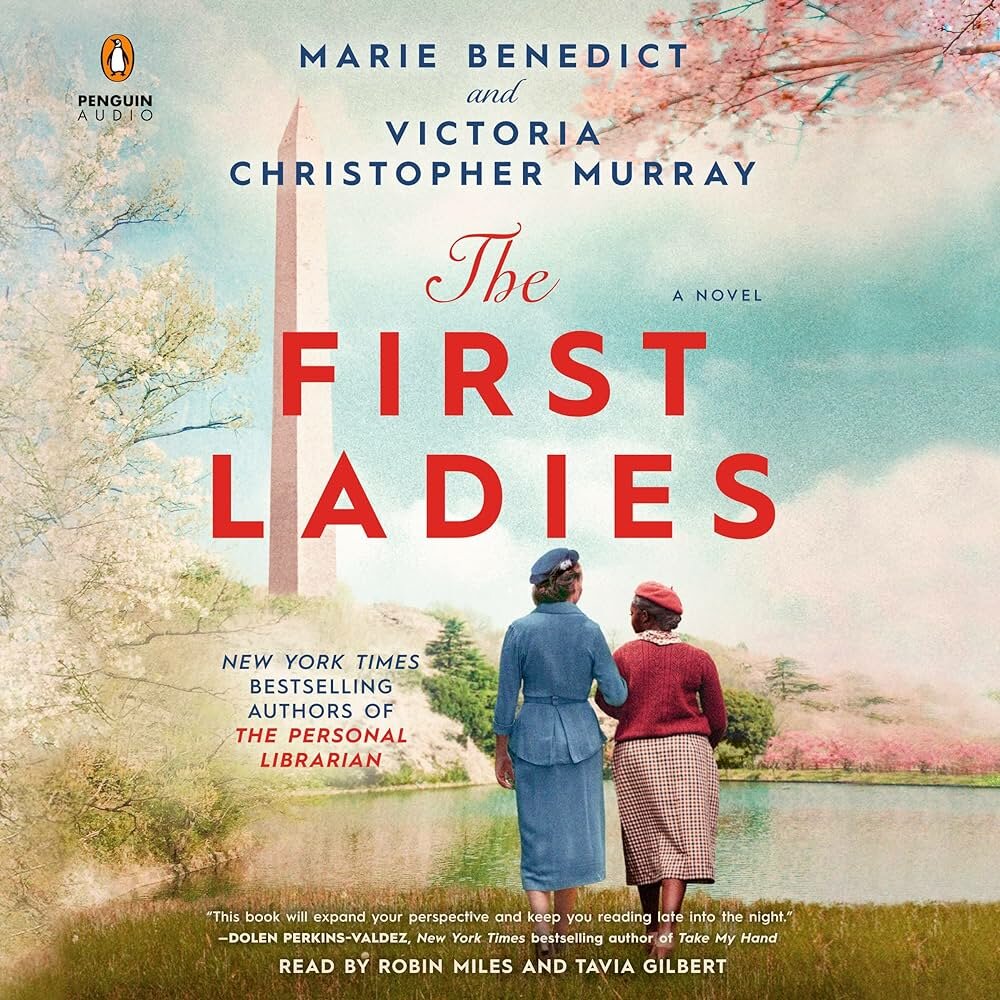The story of two feisty women who broke barriers
“First Ladies” By Marie Benedict and Victoria Christopher Murray
A highly skilled writer of historical fiction, Marie Benedict usually chooses as her subjects women of substance who …
This item is available in full to subscribers.
Please log in to continue |
Register to post eventsIf you'd like to post an event to our calendar, you can create a free account by clicking here. Note that free accounts do not have access to our subscriber-only content. |
Day pass subscribers
Are you a day pass subscriber who needs to log in? Click here to continue.
The story of two feisty women who broke barriers
“First Ladies”
By Marie Benedict and Victoria Christopher Murray
A highly skilled writer of historical fiction, Marie Benedict usually chooses as her subjects women of substance who have made a significant contribution to society. In this case it is Mary McLeod Bethune, a black educator and social activist whose friendship with First Lady Eleanor Roosevelt helped propel the Civil Rights Movement.
Born one of 16 children to enslaved parents, Mary rose to prominence as the founder of Bethune-Cookman College and president of the National Association of Colored Women’s Clubs. In addition, she was a force in the NAACP and Urban League.
Courageous and determined to advance the rights of Negroes, she demanded respect, as when a train conductor repeatedly asked “Auntie” for her ticket, Bethune refused to acknowledge his request until he addressed her properly. In this manner she asserted her dignity.
The individual chapters are devoted to the various meetings between the two women, the first resulting in a gaffe as the First Lady is so naïve as to be unaware that the posh hotel which she has selected for their first get-together did not accept Negroes. Although Eleanor is highly embarrassed, Mary is accustomed to such racism and is nonplussed.
With each meeting, the women’s mutual admiration for each other grows, until the First Lady has the audacity to ask Mary to consider shifting her allegiance from the Republican party to supporting FDR and the Democrats. Mary finds it necessary to point out that most of the ills foisted on blacks at that time were the results of Southern Democrat policies. She had already told the First Lady of the time she protected the students in her school, as well as the school itself, by standing up to a raid by the KKK on the property. As the white-robed racists wielding torches rode by on horseback, Mary stood steadfast with her students singing Negro spirituals, averting any harm that was intended for them.
Actually, in their very first conversation, Mary acquainted Eleanor with the inhumane and frequent practice of lynching in terrorizing innocent blacks. Behune’s purpose is to educate Mrs. Roosevelt in hopes of gaining her aid to pass legislation against such lawlessness and terrorism.
At Mary’s insistence, Eleanor will also succeed in convincing the President to appoint Negroes in New Deal agencies. When Eleanor takes the unprecedented step of joining the NAACP, Mary is convinced of the First Lady’s commitment to her cause. In Eleanor, Bethune recognizes a kindred soul who is easily frustrated with political rhetoric, flag-waving, handshaking and small talk at dinner parties and teas. Like the First Lady, she wants to get meaningful things done.
In what would have been considered a political “no-no” at the time, in a moment of mutual satisfaction, Eleanor reaches out to squeeze Mary’s hand, breaking the rule that whites and blacks must never touch. One key moment is when the First Lady accompanies Mary to a conference in Birmingham, Ala., where there are strict segregation laws. As the two sit together in the black section of the auditorium, police approach Eleanor to inform her that she is breaking the law and must move to the white section. Her reaction is to take a ruler to measure the exact distance between both and move her chair equidistant between the two, a powerful statement as to where she stands on racism.
Another historic moment is when Eleanor arranges for black soloist Marian Anderson to sing at Constitution Hall, and later at the Lincoln Memorial. The Great Emancipator would have approved. At the first event, Secretary of State Howard Ickes declares: “In this great auditorium under the sky, all of us are free … Please join me in welcoming a genius in her field. Genius, like justice, is blind. It draws no color lines.” In this “transcendent” moment, the tide begins to turn.
For her tole in this, the First Lady received death threats and many resigned from the DAR to which Eleanor herself belonged.
Another inroad for which Bethune was responsible was FDR’s inclusion of blacks in the military in combat training, pilot training, as well as incorporating them in the army’s officer corps and appointing senior colored officers in the War Department, including a brigadier general and an undersecretary of war. Mary also convinced Eleanor to petition for recognition of Negro Tuskegee pilots. In response, the First Lady visited their training site to request that the Chief Flight Instructor, who was black, take her on a plane ride. When his superior protested that a white woman flying with a black pilot was unprecedented and forbade it, Eleanor declared that she didn’t need his permission.
This is the story of two feisty women who, through their friendship, coordinated efforts to overcome prejudice and gain better conditions for blacks. Though Jim Crow laws at the time were against them, they persevered and together broke barriers by their example of what black and white together could accomplish to effect change.
Donna Bruno is a prizewinning author and poet recently recognized with four awards by National League of American Pen Women.






